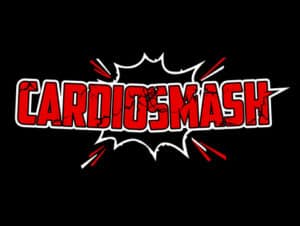Squats are one of the simplest, most effective, and overall beneficial exercises that you can do. They can be performed anywhere, anytime, and will do wonders for your thighs and glutes, your metabolism, and knee health. In fact, if you are only going to do one resistance exercise, you would be quite wise to choose squats as your go-to movement. The question is, how many squats should you do, and how often should you do them? How many squats will make a difference?
While nearly any number of squats will make some difference, the higher the number you do, the greater the results. This carries true until you get to really high rep numbers, i.e. over 200 squats. If you are out of shape, even 10-20 squats per day will have a significant impact on the strength of your legs, back, and on your energy levels. It is difficult to overtrain with bodyweight squats, so do plenty of them. 100+ squats a day is a great level to be at. If you want more muscular legs, try to work your way up to at least 50 per day, every other day and you will not regret it!
Everyone’s situation and starting point is going to be unique, so let’s discuss various entry points and the benefits you can expect at each level.
Will 20 squats a day make a difference?
If you are very out of shape, 20 squats is a great goal to have and a good starting point to move forward from. First, you should get your doctor to check you out and be sure you are healthy enough to start doing squats, or any new exercise program.
If you are very overweight, squats will be especially difficult, simply because your muscles have to move more weight. This also means that they will be especially effective for you at this point because they will require a great deal of effort.
Try doing 4 sets of 5, or whatever is easiest for you to reach the goal of 20. Even if you do one or two at a time with a brief rest in between – it’s fine! Just get to the total. Split them up throughout the day if necessary, but if you can perform all of your squats in one session it is more of a workout and will be a greater challenge.
Will doing 50 squats a day help?
Here you are starting to get into the territory where you will really see a difference. 50 squats, will break into sets of 10, or performed all at once is a significant amount of volume. This will certainly give you a great pump and lead to more muscular quadriceps, hamstrings, and glutes.
Depending on your weight, it may be fairly challenging to get to this level. Conversely, if you’re in pretty good shape already, you may be able to start at this point.
If you are a runner, or frequently walk briskly, and already have relatively strong legs, 50 squats probably won’t be all that difficult, but you well almost certainly experience a muscle soreness for the following 24 to 48 hours after your first few squat sessions. This soreness will not occur after every single squat workout, only after the first few sessions.
If you don’t do your squats regularly, you may continue to experience soreness the following day. This means you need to do them more often, as your body is not remaining accustomed to this level of output.
If you already have fairly well developed legs, and are unable to get to the gym for whatever reason, 50 squats will most likely be enough to maintain a pretty good amount of muscle mass on the legs. While you won’t get huge from 50 squats a day, you can certainly keep your quads fairly big for quite a while with this level of maintenance volume.
Will 100 squats a day do anything?
Now you’re starting to get into some serious volume. 100 squats a day will lead to some serious muscle growth in the quads particularly, as well as a definite firming and some growth in the glutes.
If performed daily, or close to it for multiple months, 100 squats per day will result in dramatic visible changes in your lower body. This amount of volume combined with the resulting muscle growth will amount to a substantial increase in your metabolic rate. This will then lead to favorable changes of body composition. Provided your diet is balanced and within your basal caloric intake, you could lose significant fat from this number of squats.
Regularity is key, infrequent performance of 100 squats is better than nothing, but taking as few days off as possible will be your best bet when it comes to ensuring success as far as changes to your body composition (bodyfat %).
10 sets of 10 squats is a great way to break yourself into this larger amount of reps. Of course, feel free to break up however you like but keep the rest intervals to a minimum. Personally, I’ve been doing squats almost daily for quite a while and I usually struggle to do more than 50 continuous reps, so if you can do more than this without taking a break, you’ll probably need to go even higher in total reps, or use some added weight.
How long does it take to see results from squats?
If you are previously untrained, doing at least 50 squats per day will result in visible changes in your legs within 30 days. You may see some reduction in bodyfat too, so long as you aren’t overeating.
The more volume (reps) you do, the longer your gains will continue. This is true up unto a point, where the resistance that your bodyweight provides is no longer sufficiently taxing for the muscles. Here you will have no choice but to use some additional weight to continue seeing results. You could grab a couple of dumbbells or a basic barbell set and start doing your squats with those.
Even if you are using additional weight, continue to keep the volume high. Don’t drop the reps because you upped the weight. The legs are used to a lot of volume in daily activities and need high rep training to really stimulate muscle growth.
You want to do enough reps to keep your legs working for 5-10 mins per day. If you can do 50 over 5 mins, that is fine. If you can knock out 50 in 1 min, you need to do more. Probably around 200. The secret to muscle growth in the legs is to keep a pump in the thighs for at least 5 mins each time you workout, and to workout at least 4 times per week.
What will 200 or more squats a day do?
200 squats per day is quite a serious amount. You will need to work up to this level or else you can risk injury, and will be very sore afterwards. 200 is enough volume to really pump up the quads and glutes. There will be some benefit to the hamstrings too but, depending on your foot placement and the style of squat you do, the bulk of the work is really done by the quadriceps. These muscles will grow quite quickly when trained sufficiently and will bulk up faster than other muscles will.
200 squats will burn a lot of calories and will lead to EPOC (excess post-exercise oxygen consumption) so will therefore cause your body to burn calories at an increased rate for many hours after you finish your workout. This will certainly result in fat loss and lean mass gains, again, as long as your diet is in check.
At this point, you are fairly advanced and will need to do some additional exercises to maintain balance in the musculature of your legs. Lunges, good mornings, and calf raises are all highly beneficial exercises that you can add, as needed, to ensure continued progress. If you are determined to use body-weight-only exercises, there’s a number of movements you can do to keep the gains coming. Check out this post on exercises you can do at home to develop your legs. Also, there are other techniques you can use to increase the difficulty of your squats, like slowing down the speed of your repetitions or pausing with your knees bent at 90°.
Will I get sore from squats?
If you have never done squats before, you will get sore. Even if you start with just 10 per day. However, if you ease into it and gradually increase the number of reps over the weeks and months.
A little soreness is to be expected anytime you do a new exercise or increase the intensity or duration of that exercise. However, too much soreness can be a deterrent to progress. If you are really sore you can’t work out for a couple of days as your body needs time to recuperate and repair itself. Also, pain is a big demotivating factor for many people, particularly beginners. If they are very sore the next day it could turn them off of resistance training altogether! So it’s always best to gradually increase the volume and intensity. If you can all but eliminate muscle soreness in the days following your workout, you can work out again sooner and stimulate those muscles again.
Listen to your body and try to do just enough squats to make your muscles feel a little tight the next day, but not really sore. The goal is to do just enough damage to the muscle fibers to stimulate growth, but only so much that they can recover from it in about 24 hours.
Some people prefer to do one all-out leg day once per week, then recover for the next 6 days. I think it is much better to do less volume and less intensity, but with high frequency. That is, do less but do it more often. This is the path to ensure continued success while building the habit of doing squats daily, or close to it.
Related Posts:
Can You (Should You) Do Cardio On Leg Day?
Ultimately, yes you can do cardio on leg day. However you will definitely want to do the weight training first. You see, you won’t perform as well on whichever one you do second, due to fatigue. If possible, spread them out a few hours, and don’t expect to train too hard on the cardio, your legs probably won’t handle it well. Low impact cardio choices, like swimming or the elliptical trainer, are your best options. Because leg training is so strenuous, it’s really better to do them on separate days. But if your schedule requires it, or if your leg training is not too intense, you can do it and not suffer any reduction in results. It is most important to do the leg training with well rested muscles, so don’t do any intense cardio for at least 24 hrs before if you can help it.
Push-ups AND Squats VS Burpees: How Do They Compare And Which Is Better?
If you are seeking to muscle and get better conditioned, including the combination of squats and pushups will cover most of your bases. While you can still benefit from burpees, as they provide a cardiovascular workout, and are more difficult than either pushups or squats, they are not ultimately necessary if you perform some cardio, preferably a high intensity interval training like sprints or high-low intensity cycling. As long as you are training your heart and lungs with something that will get you breathing deep and hard, along with 50-100 (of both) pushups and squats, you will build your legs, arms, chest, and shoulders, and get leaner with a healthy balanced diet. If you prefer, you could get most of these results from burpees, but be prepared to spend a solid 15 mins per day performing them.


